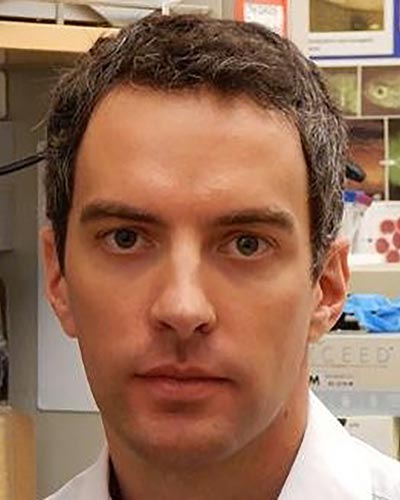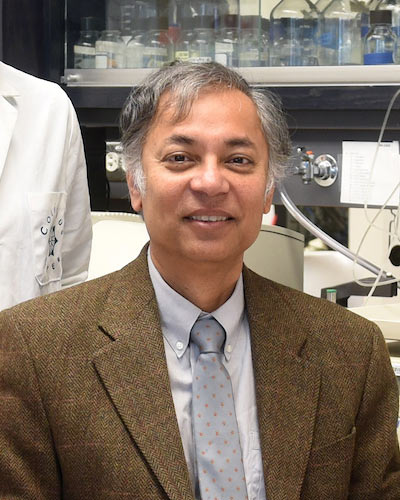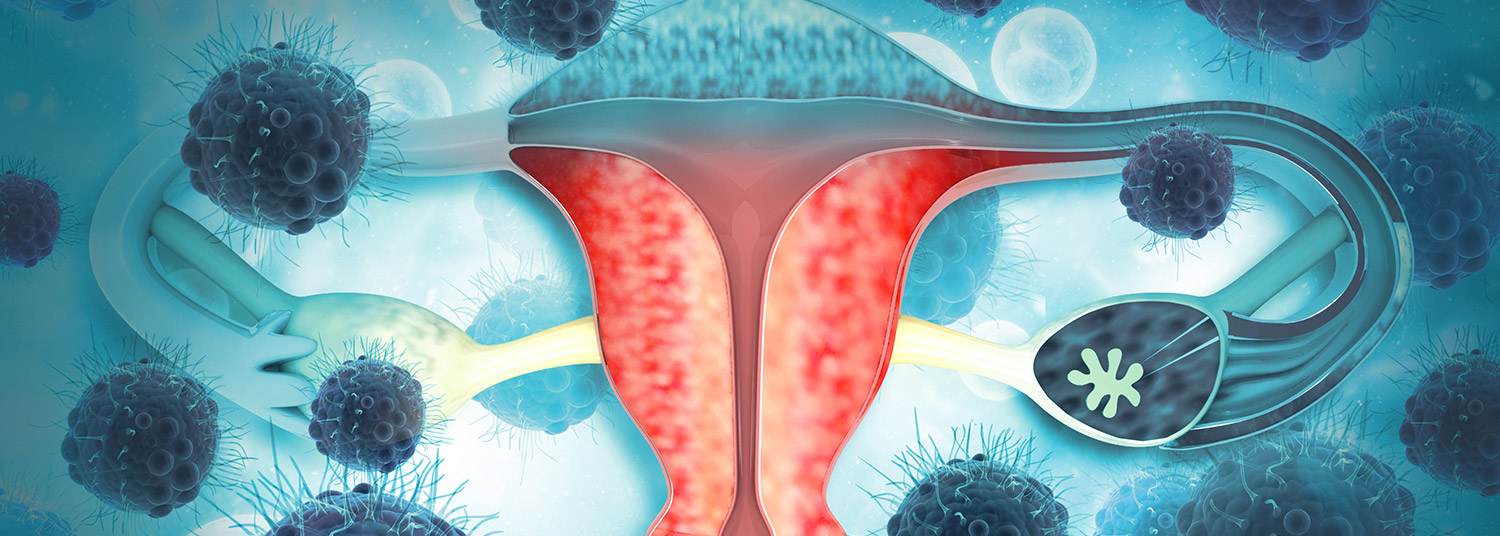September 20, 2021
Research Will Help Identify Mechanisms by Which the Microbiome Affects the Susceptibility to Sexually Transmitted Infections
Researchers at the Institute for Genome Sciences (IGS) at the University of Maryland School of Medicine have received a $7.5 million federal grant to create a complex model of the female reproductive system in order to study sexually transmitted infections (STIs). They plan to create a realistic 3D model that integrates vaginal and cervical epithelial cells and the bacteria that colonize these cells, called a microbiome. They aim to use this model to identity factors that play a role in chlamydia and gonorrhea infections experienced by a growing number of women in the U.S. and worldwide.

Constructing the 3D model will require several feats of biomedical engineering. These include growing all cell types from vaginal and cervical tissue biopsy samples collected from research volunteers, coaxing the cervical cells to produce a critical protective mucus layer, and adding colonies of thriving bacteria to recreate the microbiome found at both of these anatomical sites. Dr. Ravel is a world-renowned expert on the role of the genital microbiome in female reproductive health.
“We are trying to mimic as much as possible what occurs naturally in the female reproductive tract,” said Dr. Ravel. “We cannot look at cells on a fixed slide under a microscope to determine how infections take hold and persist in the body. We need to understand how these cells interact with the microbiome to determine whether a pathogen gains entry to the body or is destroyed by the immune system.”
Chlamydia is the most frequently reported sexually transmitted infectious disease in the United States, according to the Centers for Disease Control and Prevention. Many women experience repeated or persistent infections, which can ultimately lead to pelvic inflammatory disease and infertility. Gonorrhea can present similar complications if infections persist.
“We have so many unanswered questions when it comes to understanding why some patients can clear these infections naturally or with a course of antibiotics, while others cannot,” Dr. Ravel said. “We would like to map out how healthy cells in the reproductive tract interact with the microbiome and how that interaction prevents or facilitates the infection, which has not been done before.”
Current models do not integrate the presence of the microbiome. “It is logical to hypothesize that the interaction between cells and these colonies of bacteria plays a critical role in infection outcomes,” Dr. Ravel said, “but we do not know for certain until we test this theory in our new model, as we cannot do that in vivo. This is a major innovation in this project.”
The research ultimately aims to improve the understanding of STI infection progression, resistance to treatment, and susceptibility to new infections. Over time, such findings may lead to improved approaches to manage STIs, including testing new probiotic treatments. These preclinical studies are often required by the Food and Drug Administration before experimental treatments can be tested in patients. The model could replace the inadequate animal models currently used, Dr. Ravel said. None of these reproduce the unique microbial ecosystem found in a female genital tract.
“We plan to use technological genomics and bioinformatics platforms developed at IGS and apply system biology approaches in order to gain a fuller understanding of the interactions between reproductive cells, the microbiome, and invading pathogens,” Dr. Ravel said.
The large project grant is funded by the National Institutes of Health (1U19AI158930 and includes collaborations with the University of Virginia School of Medicine.
“Our leading genomics researchers at IGS aim to improve our understanding of the mechanisms by which the microbiome affect human reproductive health, and translate this knowledge into novel therapeutics measures to modulate the microbiome and optimize women’s health in the US and worldwide,” said E. Albert Reece, MD, PhD, MBA, Executive Vice President for Medical Affairs, UM Baltimore, and the John Z. and Akiko K. Bowers Distinguished Professor and Dean, University of Maryland School of Medicine. “As IGS investigators apply the tools of genomic analysis to medical challenges, the impact of this research is far-reaching and could potentially help millions of women who suffer from not only serious sequalae from sexually transmitted infections but also poor reproductive health outcomes such as preterm birth.”
About the University of Maryland School of Medicine
Now in its third century, the University of Maryland School of Medicine was chartered in 1807 as the first public medical school in the United States. It continues today as one of the fastest growing, top-tier biomedical research enterprises in the world -- with 46 academic departments, centers, institutes, and programs, and a faculty of more than 3,000 physicians, scientists, and allied health professionals, including members of the National Academy of Medicine and the National Academy of Sciences, and a distinguished two-time winner of the Albert E. Lasker Award in Medical Research. With an operating budget of more than $1.2 billion, the School of Medicine works closely in partnership with the University of Maryland Medical Center and Medical System to provide research-intensive, academic and clinically based care for nearly 2 million patients each year. The School of Medicine has nearly $600 million in extramural funding, with most of its academic departments highly ranked among all medical schools in the nation in research funding. As one of the seven professional schools that make up the University of Maryland, Baltimore campus, the School of Medicine has a total population of nearly 9,000 faculty and staff, including 2,500 students, trainees, residents, and fellows. The combined School of Medicine and Medical System (“University of Maryland Medicine”) has an annual budget of over $6 billion and an economic impact of nearly $20 billion on the state and local community. The School of Medicine, which ranks as the 8th highest among public medical schools in research productivity (according to the Association of American Medical Colleges profile) is an innovator in translational medicine, with 606 active patents and 52 start-up companies. In the latest U.S. News & World Report ranking of the Best Medical Schools, published in 2021, the UM School of Medicine is ranked #9 among the 92 public medical schools in the U.S., and in the top 15 percent (#27) of all 192 public and private U.S. medical schools. The School of Medicine works locally, nationally, and globally, with research and treatment facilities in 36 countries around the world. Visit medschool.umaryland.edu
Contact
Office of Public Affairs
655 West Baltimore Street
Bressler Research Building 14-002
Baltimore, Maryland 21201-1559
Contact Media Relations
(410) 706-5260
Related stories

Wednesday, July 19, 2023
New Innovation in CAR T-Cells Paves Way for Less Toxic Therapy Against Multiple Myeloma
University of Maryland School of Medicine (UMSOM) researchers engineered a new type of CAR T-cell therapy that, in preclinical studies, selectively attacked cancer cells while sparing healthy cells, potentially reducing the likelihood of toxic side effects from this innovative cancer treatment. The cells were designed specifically to attack multiple myeloma, a cancer of the plasma cells found in the body’s bone marrow.

Wednesday, April 05, 2023
Understanding E. Coli Strains That Do Not Cause Diarrhea Could Lead to New Treatments
News reports featuring E. coli often tell terrifying stories of intestinal illness and diarrhea or deadly outbreaks from contaminated food. There are, however, many different strains of the bacteria E. coli, or Escherichia coli, and not all are bad.

Friday, July 29, 2022
Why Breast-Fed Premature Infants Have A Healthier Gut Than Formula-Fed Ones
Human breastmilk has long been considered “liquid gold” among clinicians treating premature infants in a newborn intensive care unit (NICU). Breastmilk-fed “preemies” are healthier, on average, than those fed formula. Why is that true, however, has remained a mystery.

Thursday, March 18, 2021
UM School of Medicine Helps Maryland Conduct State-Wide Sequencing of Variants in Positive COVID-19 Test Specimens
In an effort to monitor the spread of COVID-19 variants in the State of Maryland, University of Maryland School of Medicine (UMSOM) Dean E. Albert Reece, MD, PhD, MBA, announced that UMaryland Genomics at UMSOM will perform genome sequencing of variants in at least 10 percent of COVID-19 test samples, reaching an important benchmark set by the federal government to help control the spread of these variants.

Tuesday, August 13, 2019
Researchers Identify How Vaginal Microbiome Can Elicit Resistance or Susceptibility to Chlamydia
The vaginal microbiome is believed to protect women against Chlamydia trachomatis, the etiological agent of the most prevalent sexually transmitted infections (STIs) in developed countries. New research by the University of Maryland School of Medicine (UMSOM) shows how the microbiome can either protect or make a woman more susceptible to these serious infections.

Wednesday, March 27, 2019
New Study Finds That Bacteria and Immunity in the Cervix May be Key to Predicting Premature Birth
Spontaneous preterm birth (sPTB), defined as birth before 37 weeks of gestation, and the related complications, are the largest contributors to infant death in the United States and worldwide, according to the World Health Organization. Researchers at the University of Maryland School of Medicine (UMSOM) have discovered that bacteria and innate immune factors in a woman’s birth canal and cervix may increase the risk of spontaneous preterm birth or provide protection against such births.

Tuesday, December 19, 2017
UMSOM Scientists Identify Key Factors that Help Microbes Thrive in Harsh Environments
Three new studies by University of Maryland School of Medicine (UMSOM) scientists have identified key factors that help microbes survive in harsh environments.

